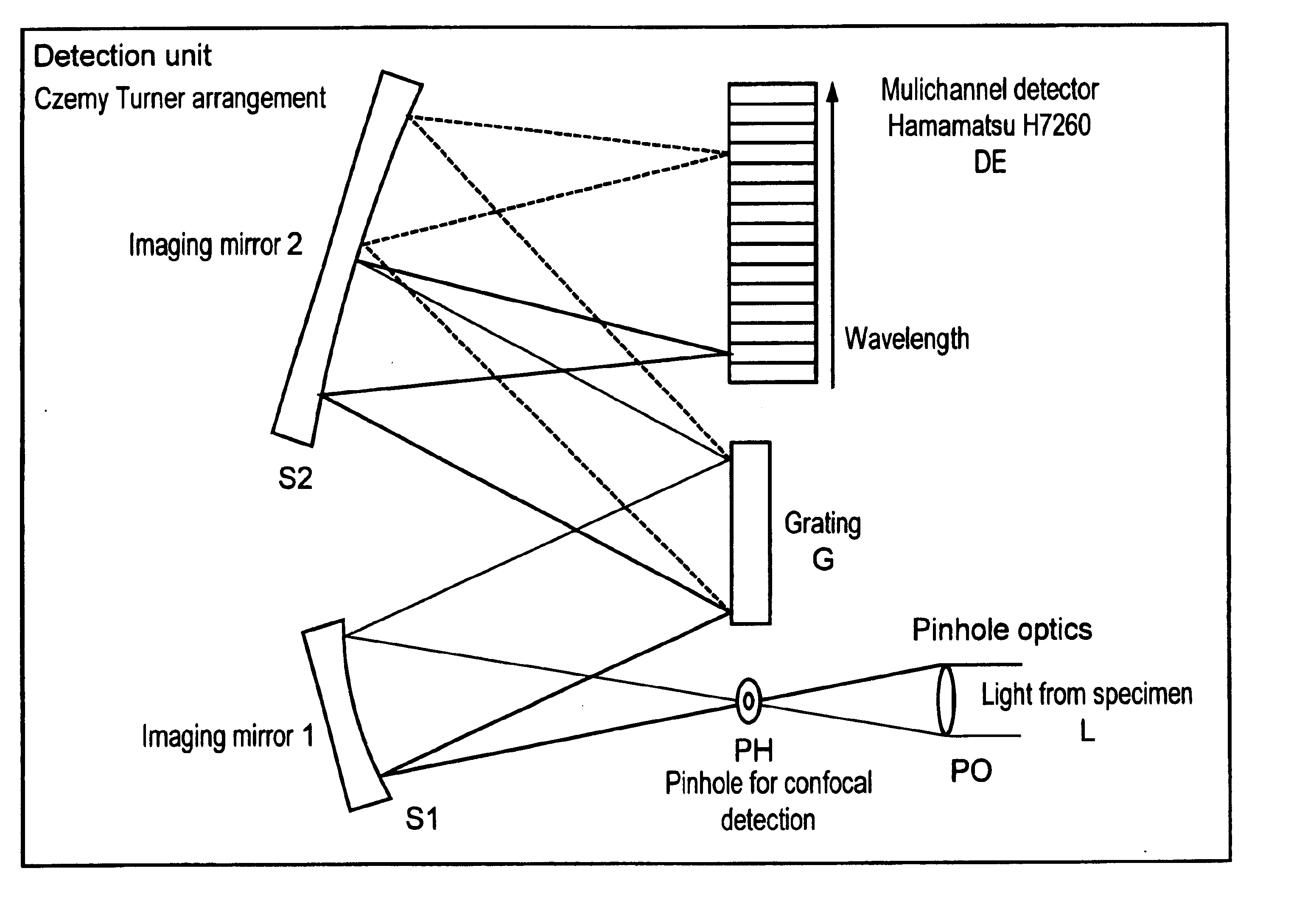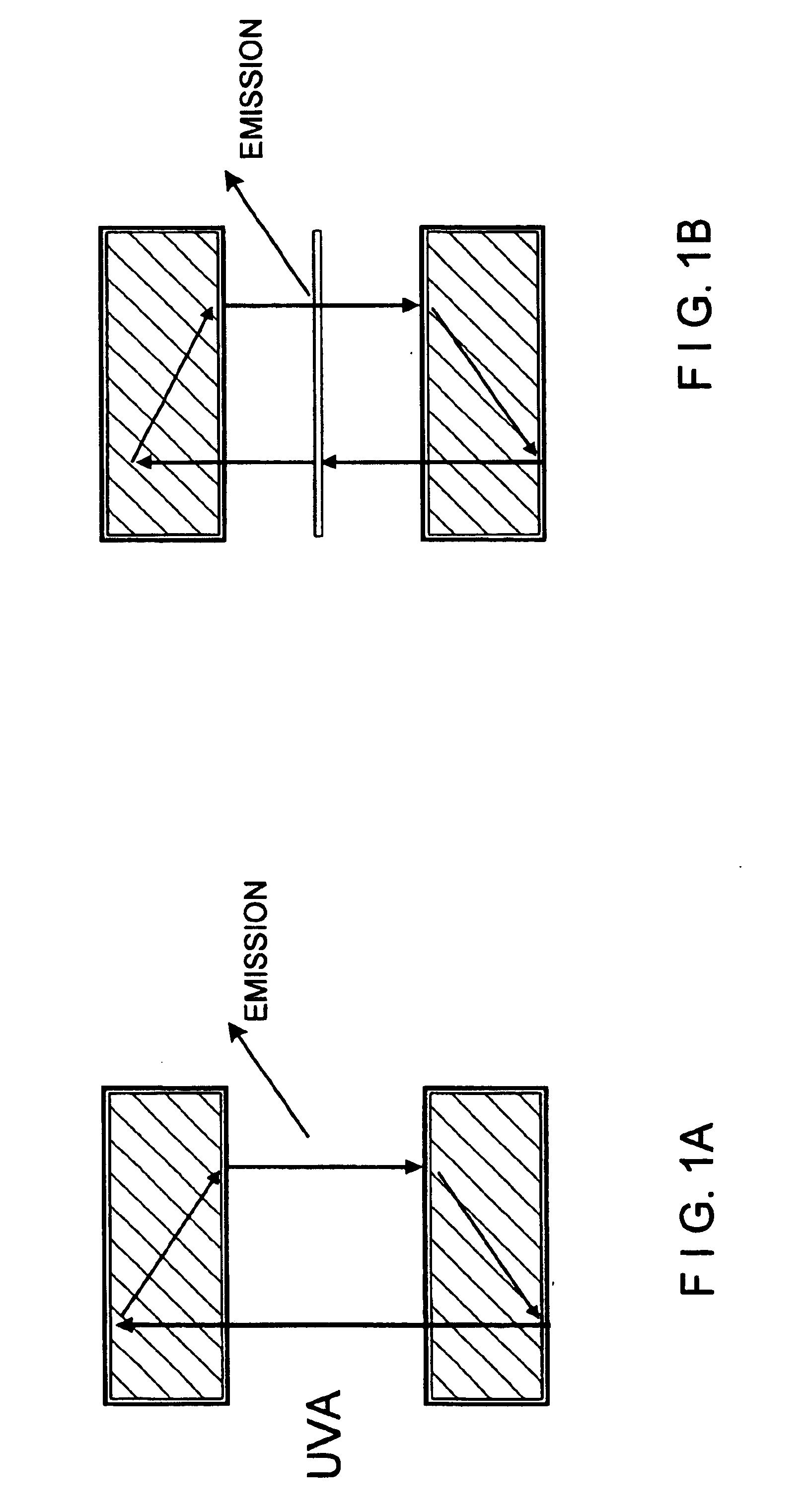Method and apparatus for rapid change of fluorescence bands in the detection of dyes in fluorescence microscopy
a fluorescence microscopy and dye technology, applied in scanning probe microscopy, spectral investigation, photometry, etc., can solve the problem of inflexible adaptation of detection and excitation to corresponding new dye characteristics for users
- Summary
- Abstract
- Description
- Claims
- Application Information
AI Technical Summary
Benefits of technology
Problems solved by technology
Method used
Image
Examples
embodiment form
A possible embodiment form of the optical beam path of the detector unit shown in the block diagram in FIG. 5 is shown in FIG. 6. The construction is essentially a Czerny Turner construction. In confocal detection, the light L from the specimen is focused through the confocal diaphragm PH by the pinhole optics PO. With non-descanned detection in case of multiphoton absorption, this diaphragm can be omitted. The first imaging mirror S1 collimates the fluorescent light. Subsequently, the light strikes a line grating G, for example, a grating with a line number of 651 lines per mm. The grating bends the light in different directions corresponding to its wavelength. The second imaging mirror S2 focuses the individual spectrally split wavelength components on the corresponding channels of the line detector DE. The use of a secondary electron multiplier array by Hamamatsu H7260 is especially advantageous. The detector has 32 channels and high sensitivity. The free spectral region of the e...
PUM
 Login to View More
Login to View More Abstract
Description
Claims
Application Information
 Login to View More
Login to View More - R&D
- Intellectual Property
- Life Sciences
- Materials
- Tech Scout
- Unparalleled Data Quality
- Higher Quality Content
- 60% Fewer Hallucinations
Browse by: Latest US Patents, China's latest patents, Technical Efficacy Thesaurus, Application Domain, Technology Topic, Popular Technical Reports.
© 2025 PatSnap. All rights reserved.Legal|Privacy policy|Modern Slavery Act Transparency Statement|Sitemap|About US| Contact US: help@patsnap.com



